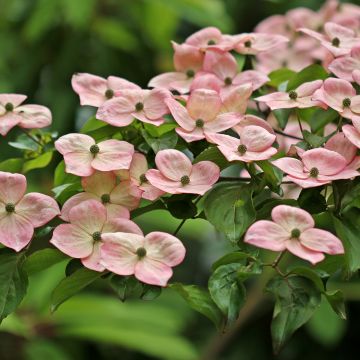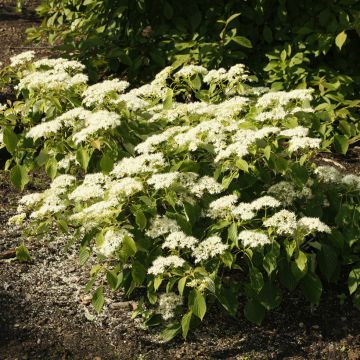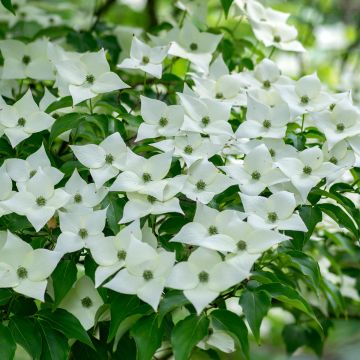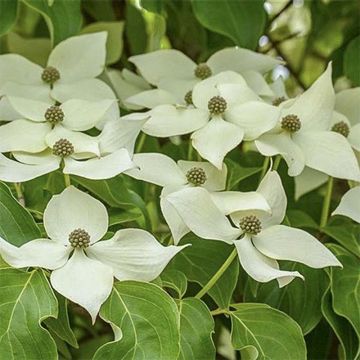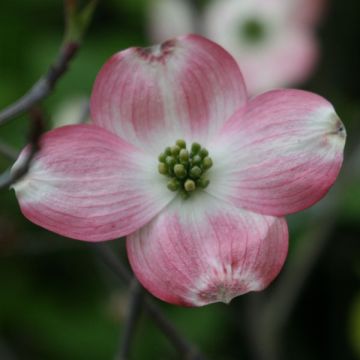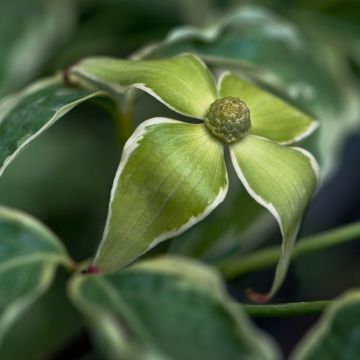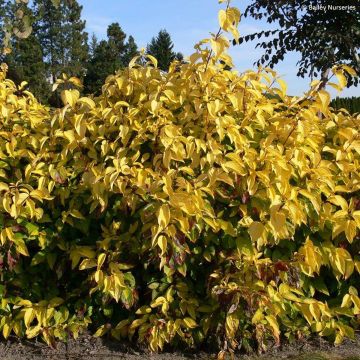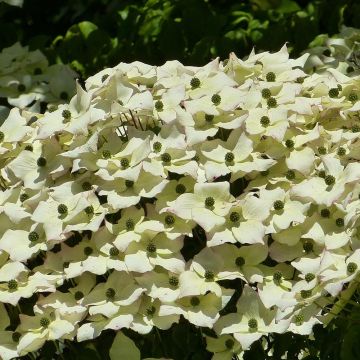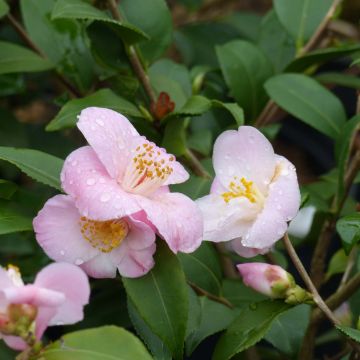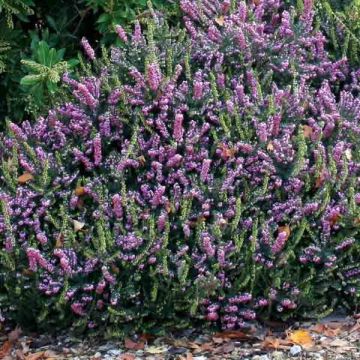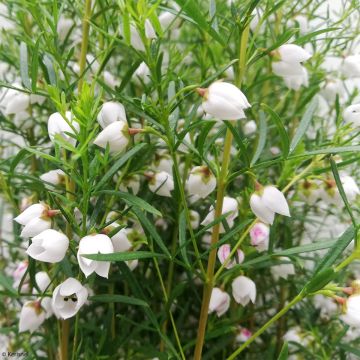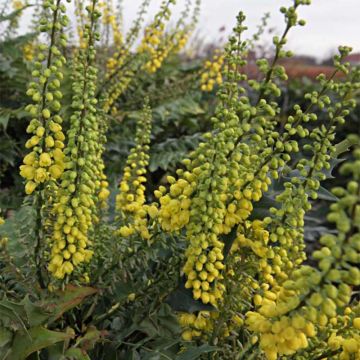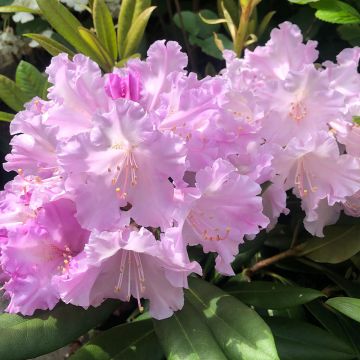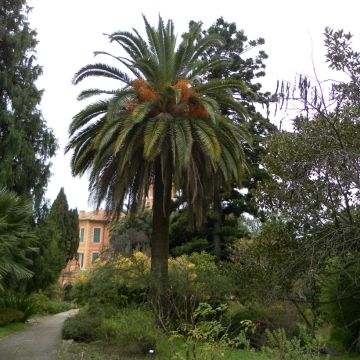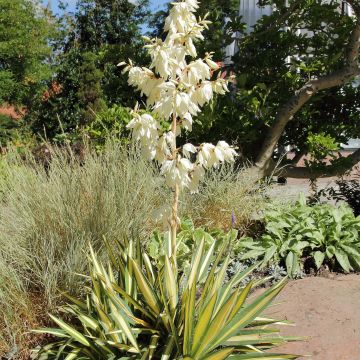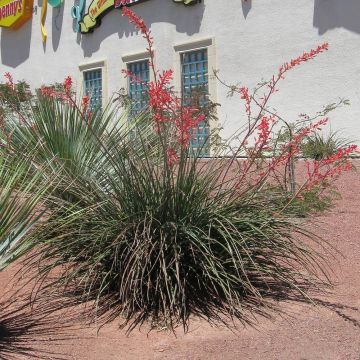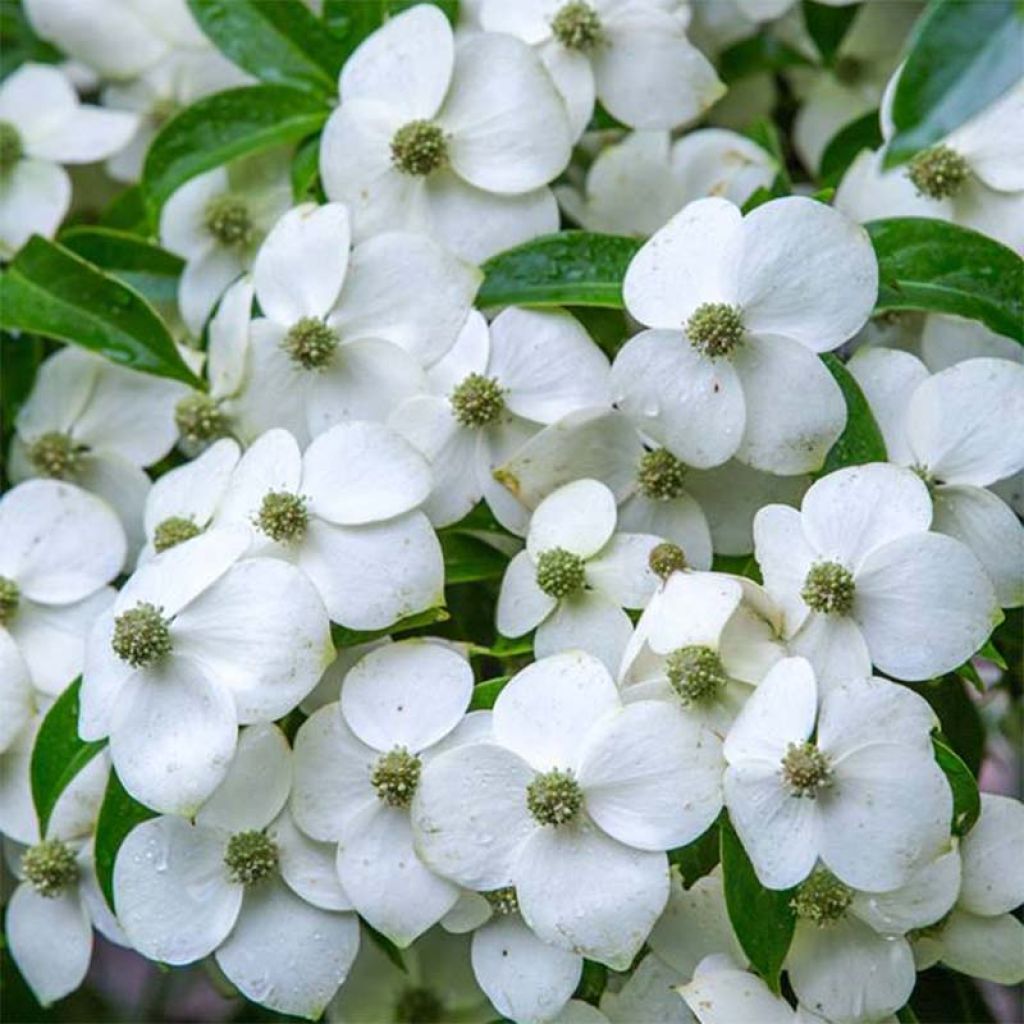

Cornus angustata Empress of China - Flowering Dogwood
Cornus angustata Empress of China - Flowering Dogwood
Cornus angustata Empress of China Elsbry
Flowering dogwood
This item cannot be shipped to the selected country
Delivery charge from €5.90
More information
Schedule delivery date,
and select date in basket
This plant carries a 24 months recovery warranty
More information
We guarantee the quality of our plants for a full growing cycle, and will replace at our expense any plant that fails to recover under normal climatic and planting conditions.
From €5.90 for pickup delivery and €6.90 for home delivery
Express home delivery from €8.90.
Does this plant fit my garden?
Set up your Plantfit profile →
Description
Cornus angustata 'Empress of China' is a superb evergreen dogwood, very floriferous and particularly bright in the partially shaded areas of the garden. Forming over time a large bush of at least 4m (13ft 1in), almost as wide as it is tall, it truly disappears in late spring under a snow of white-cream flowers. They are followed by the formation of decorative red fruits, resembling raspberries. At once opulent, generous, and graceful, this bush is perfectly hardy in our climates and tolerates heat quite well, in moist but well-drained soil.
The 'Empress of China' Dogwood comes from a bush of Chinese origin, with evergreen foliage in most of our climates. This beautiful improvement obtained by John Esley in the USA offers particularly abundant flowering and exceptional vigour. 'Empress of China' will reach over 4m (13ft 1in) in height at maturity, with a nearly equivalent spread. Its growth is quite slow. Flowering takes place in May-June. Each branch produces up to 150 flowers surrounded by 4 lime green bracts that turn white-cream. Each of these "false flowers" measures about 3-4cm (1.2-1.6in) in diameter. They are so numerous that they gracefully bend the branches that bear them, forming a veritable mass of snow. This exuberant flowering is followed in late summer and autumn by the formation of very decorative, edible fruits that resemble raspberries but do not have their fragrance. The foliage, which somewhat resembles that of a ficus, is composed of tough, shiny, light green leaves that sometimes turn purple. They are 8cm (3.1in) long and 2.5cm (1in) wide. The oldest leaves fall at the same time as the new shoots emerge in spring.
This 'Empress of China' dogwood is very hardy (- up to 20°C (68 °F)), and tolerates climates that are both hot and humid in summer better than Cornus kousa. In the United States, it thrives as well in Texas as it does in Maryland. Therefore, it can be deduced that it will thrive in most of our climates, provided it is planted in soil that is not too dry in summer. It is very decorative throughout the year, especially in partially shaded areas, along a large avenue where it truly catches the eye. It is interesting as a standalone plant for small gardens, in flowerbeds as well as in free hedges. It can be associated with a wide range of staggered flowering shrubs, such as forsythias, mock oranges, smoke bushes, lilacs, viburnums, or buddleias. In acidic soil, it will be a perfect companion for Pieris, Rhododendrons, Camellias, and Kalmia.
Report an error about the product description
Cornus angustata Empress of China - Flowering Dogwood in pictures
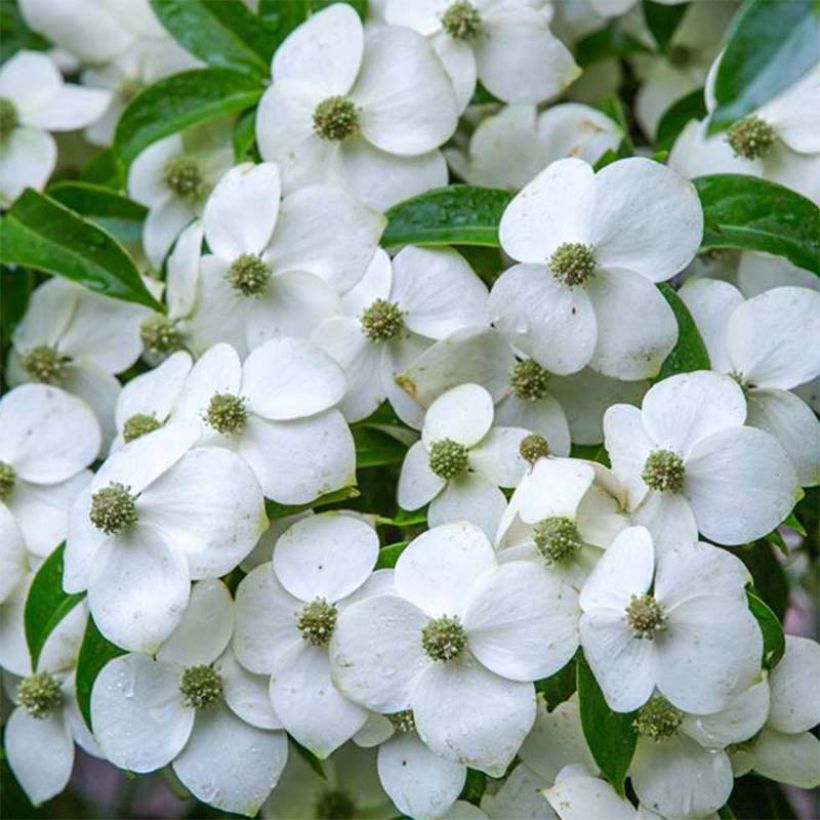



Plant habit
Flowering
Foliage
Botanical data
Cornus
angustata
Empress of China Elsbry
Cornaceae
Flowering dogwood
Cultivar or hybrid
Other Cornus
Planting and care
Cornus 'Empress of China' should be planted in the morning sun or in a partially shaded area of the garden, away from the burning rays of the sun. It thrives in the warmth that aids in its flowering and is susceptible to late spring frosts. It should be placed in ordinary soil without excessive limestone. The soil should remain moist but well-drained as its roots are sensitive to stagnant water and heavy soils. It can be planted in spring or autumn (frost-free). Easy to grow, this Dogwood requires little maintenance. Pruning is not essential. Be cautious of parasitic attacks such as anthracnose, which can cause severe damage.
Planting period
Intended location
Care
-
, onOrder confirmed
Reply from on Promesse de fleurs
Evergreen shrubs
Haven't found what you were looking for?
Hardiness is the lowest winter temperature a plant can endure without suffering serious damage or even dying. However, hardiness is affected by location (a sheltered area, such as a patio), protection (winter cover) and soil type (hardiness is improved by well-drained soil).

Photo Sharing Terms & Conditions
In order to encourage gardeners to interact and share their experiences, Promesse de fleurs offers various media enabling content to be uploaded onto its Site - in particular via the ‘Photo sharing’ module.
The User agrees to refrain from:
- Posting any content that is illegal, prejudicial, insulting, racist, inciteful to hatred, revisionist, contrary to public decency, that infringes on privacy or on the privacy rights of third parties, in particular the publicity rights of persons and goods, intellectual property rights, or the right to privacy.
- Submitting content on behalf of a third party;
- Impersonate the identity of a third party and/or publish any personal information about a third party;
In general, the User undertakes to refrain from any unethical behaviour.
All Content (in particular text, comments, files, images, photos, videos, creative works, etc.), which may be subject to property or intellectual property rights, image or other private rights, shall remain the property of the User, subject to the limited rights granted by the terms of the licence granted by Promesse de fleurs as stated below. Users are at liberty to publish or not to publish such Content on the Site, notably via the ‘Photo Sharing’ facility, and accept that this Content shall be made public and freely accessible, notably on the Internet.
Users further acknowledge, undertake to have ,and guarantee that they hold all necessary rights and permissions to publish such material on the Site, in particular with regard to the legislation in force pertaining to any privacy, property, intellectual property, image, or contractual rights, or rights of any other nature. By publishing such Content on the Site, Users acknowledge accepting full liability as publishers of the Content within the meaning of the law, and grant Promesse de fleurs, free of charge, an inclusive, worldwide licence for the said Content for the entire duration of its publication, including all reproduction, representation, up/downloading, displaying, performing, transmission, and storage rights.
Users also grant permission for their name to be linked to the Content and accept that this link may not always be made available.
By engaging in posting material, Users consent to their Content becoming automatically accessible on the Internet, in particular on other sites and/or blogs and/or web pages of the Promesse de fleurs site, including in particular social pages and the Promesse de fleurs catalogue.
Users may secure the removal of entrusted content free of charge by issuing a simple request via our contact form.
The flowering period indicated on our website applies to countries and regions located in USDA zone 8 (France, the United Kingdom, Ireland, the Netherlands, etc.)
It will vary according to where you live:
- In zones 9 to 10 (Italy, Spain, Greece, etc.), flowering will occur about 2 to 4 weeks earlier.
- In zones 6 to 7 (Germany, Poland, Slovenia, and lower mountainous regions), flowering will be delayed by 2 to 3 weeks.
- In zone 5 (Central Europe, Scandinavia), blooming will be delayed by 3 to 5 weeks.
In temperate climates, pruning of spring-flowering shrubs (forsythia, spireas, etc.) should be done just after flowering.
Pruning of summer-flowering shrubs (Indian Lilac, Perovskia, etc.) can be done in winter or spring.
In cold regions as well as with frost-sensitive plants, avoid pruning too early when severe frosts may still occur.
The planting period indicated on our website applies to countries and regions located in USDA zone 8 (France, United Kingdom, Ireland, Netherlands).
It will vary according to where you live:
- In Mediterranean zones (Marseille, Madrid, Milan, etc.), autumn and winter are the best planting periods.
- In continental zones (Strasbourg, Munich, Vienna, etc.), delay planting by 2 to 3 weeks in spring and bring it forward by 2 to 4 weeks in autumn.
- In mountainous regions (the Alps, Pyrenees, Carpathians, etc.), it is best to plant in late spring (May-June) or late summer (August-September).
The harvesting period indicated on our website applies to countries and regions in USDA zone 8 (France, England, Ireland, the Netherlands).
In colder areas (Scandinavia, Poland, Austria...) fruit and vegetable harvests are likely to be delayed by 3-4 weeks.
In warmer areas (Italy, Spain, Greece, etc.), harvesting will probably take place earlier, depending on weather conditions.
The sowing periods indicated on our website apply to countries and regions within USDA Zone 8 (France, UK, Ireland, Netherlands).
In colder areas (Scandinavia, Poland, Austria...), delay any outdoor sowing by 3-4 weeks, or sow under glass.
In warmer climes (Italy, Spain, Greece, etc.), bring outdoor sowing forward by a few weeks.

































